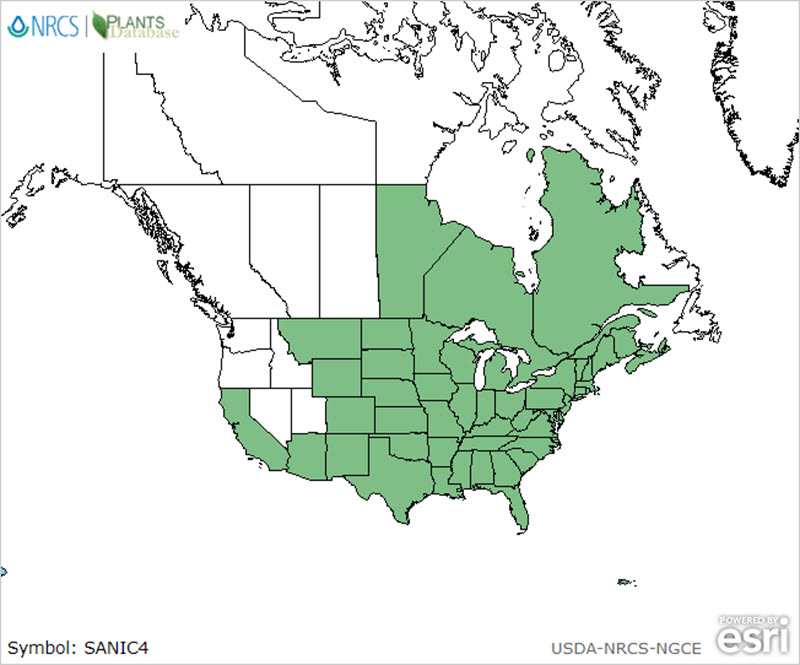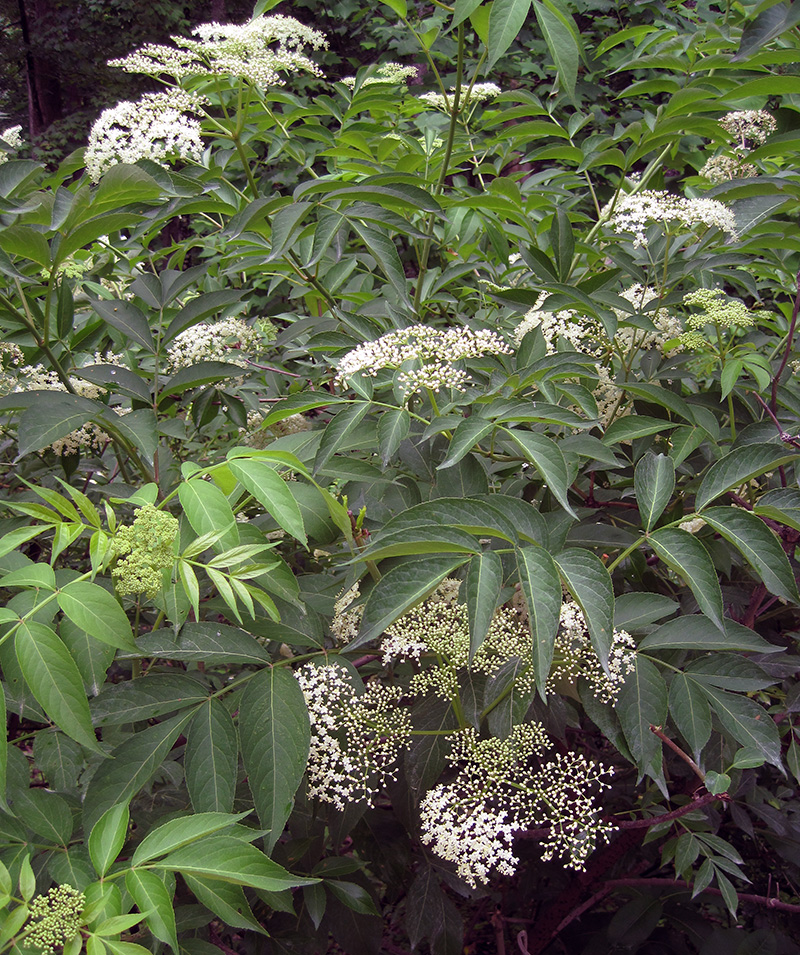Plant of the Week
 American Black Elderberry range map. USDA PLANTS Database.
American Black Elderberry range map. USDA PLANTS Database.
 American Black Elderberry flower.
American Black Elderberry flower.
American Black Elderberry (Sambucus nigra L. ssp. Canadensis (L.) R. Bolli)
By David Taylor
American black elderberry is a member of the Adoxaceae, the Moschatel family. Species in this family are small to large shrubs, with a few small trees. Several common ornamental shrubs are in the family including tea viburnum (Viburnum setigerum) and wrinkled viburnum (Viburnum rhytidophyllum). The elderberries were recently moved from the Caprifoliaceae, the Honeysuckle family, to the Adoxaceae. Elderberry species are known from North and South America, Europe, Asia and the South Pacific.
This shrub is 2 – 4 m (6.5 – 13 ft) tall, usually on the smaller end than larger. One to many somewhat weak stems arise from the crown. Young stems have a large white pith while older stems are mostly hollow. Leaves are opposite and pinnately compound. Leaves are 15 – 30.5 cm (6 – 12 in) long by 12.7 – 22.9 cm (ca. 5 – 9 in) wide with 5 – 11 leaflets. Each leaflet is 12.7 – 30.5 cm (5 – 12 in) long by about 1/3 as wide. Leaves are thin, toothed, green on top and paler underneath. Flowers are borne in 12.7 – 229 cm (5 – 9 in) wide clusters (inflorescences) at tips of branches. Clusters may contain several hundred flowers. White 4- to 5-petaled flowers are small, only about 3 mm (0.1 in) wide. Fruits are purple-black berries about 6 mm (0.25 in) in diameter.
American black elderberry is usually found in moist, edge habitat, in full or light shade. It is often on lake and pond shores, low areas along road ways, in low forest and old fields. It is native across the U.S. except in Nevada, Utah, Idaho, Oregon, Washington, Alaska and Hawai’i. It is also known from Manitoba east through New Brunswick, Prince Edward Island and Nova Scotia.
This species flowers in June to July depending on the part of the country in which it is found. Bees, wasps, and beetles are strongly attracted to the flowers. Fruits ripen in August to September and are eaten by many species of birds and mammals.
The flowers of this species are used to make wine and the fruits are used to make pies and various jams and preserves. Many varieties are available commercially for ornamental as well as culinary use. As some people react negatively to the raw fruit, they should not be eaten unless cooked. The ssp. cerulea occurs in the western U.S., British Columbia and parts of México. The ssp. nigra occurs in Europe and parts of western Asia.



